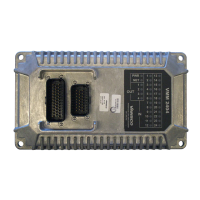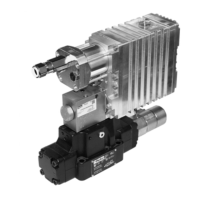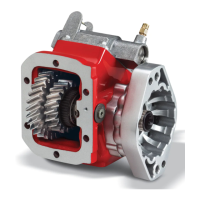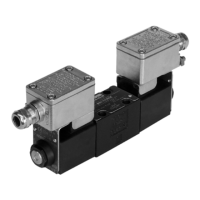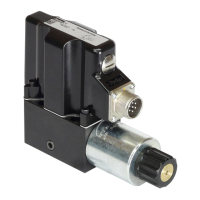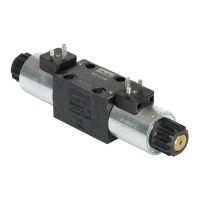28
PWDXXA-40X_20 5715-677 UK.indd 26.01.17
Electronic for proportional DC valves
Series PWDXXA-40X
Operation Manual
Parker Hannifin Corporation
Hydraulics Group
Parker Hannifin Corporation
Hydraulics Group
The table below gives information, which approaches may be embarked if typical problems with posi-
tion control loops appear.
Problem Solution
Position error too large,
when drive is stationary
Use parameter P17 = I-gain
(only active if P26 > 0)
Repeatable position error by using a valve
with overlap/hysteresis
Use dead band compensation feature
P7 = MIN channel A resp.
P8 = MIN channel B
Position error too large when following
constant velocity position command
Use parameter
P13 = bypass gain
Slow, small amplitude, position oscillation
Use integrator window
P26 = window I-gain
Disappointingly low P-gain
Check the frequency response of the valve
and position transducer, or possibly the drive
resonant frequency (s. items below)
Response too slow
Be sure P16 = p-gain is adjusted high
enough (s. also previous items)
Unexplainable problems Check the setting of all parameters
Improving system performance
Using the parameter P17 = I-gain
The integrator gain (abbreviated I) can be adjusted
to reduce or eliminate the error between the com-
manded position and the position measured by
the feedback transducer, subject to the command
remaining constant. Higher values of I-gain will
cause the response to be slower and more prone
to oscillation with the combined effect of a re-
duced stationary error. Lower values will require
an extended time to reach zero steady state error.
This parameter is only active if a window (> 0) is
defined via P26.
Elimination of slow, small amplitude oscillation
in position
Because of friction and other imperfections, use of
the I-gain sometimes causes a slow, small ampli-
tude oscillation in load position. This is an entirely
different problem from the vigorous oscillations
that occur when the P-gain is set too high. The
electronic provides a “Window” feature (sometimes
called “in-position-window”) to solve this problem.
Select the parameter P26. Stepwise increasing of
the window size to a large enough value will stop
the slow oscillations.
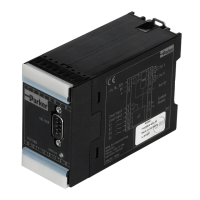
